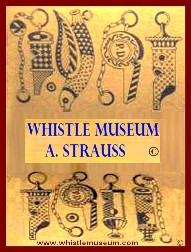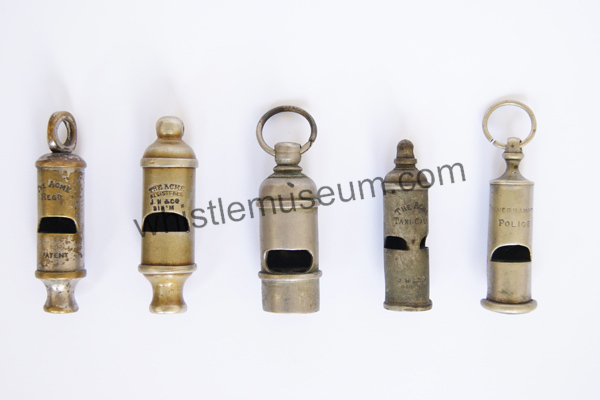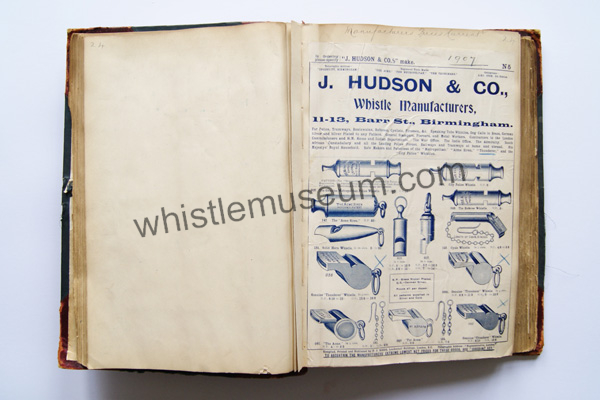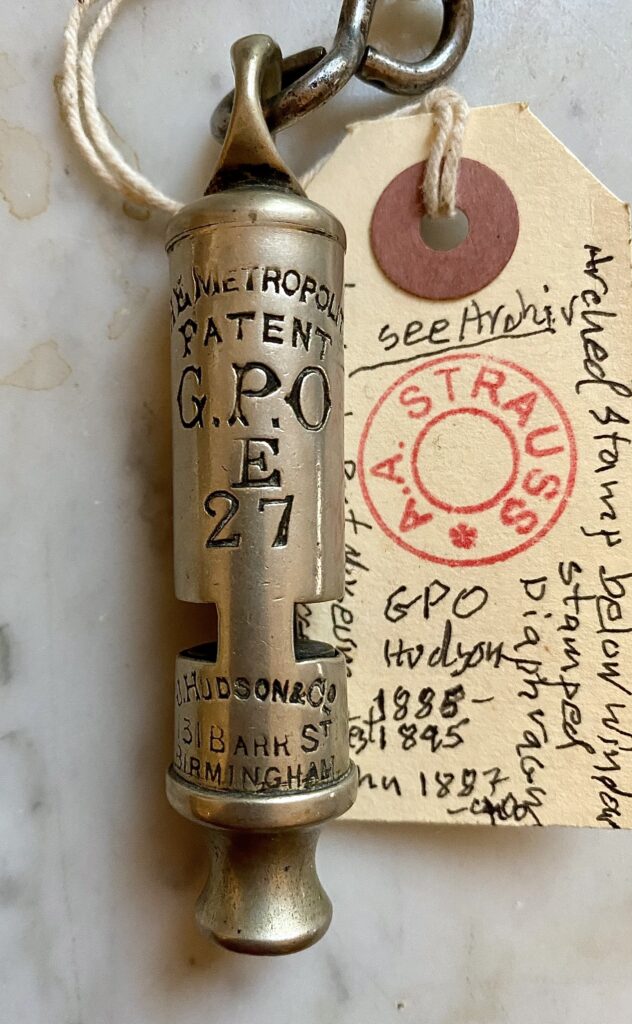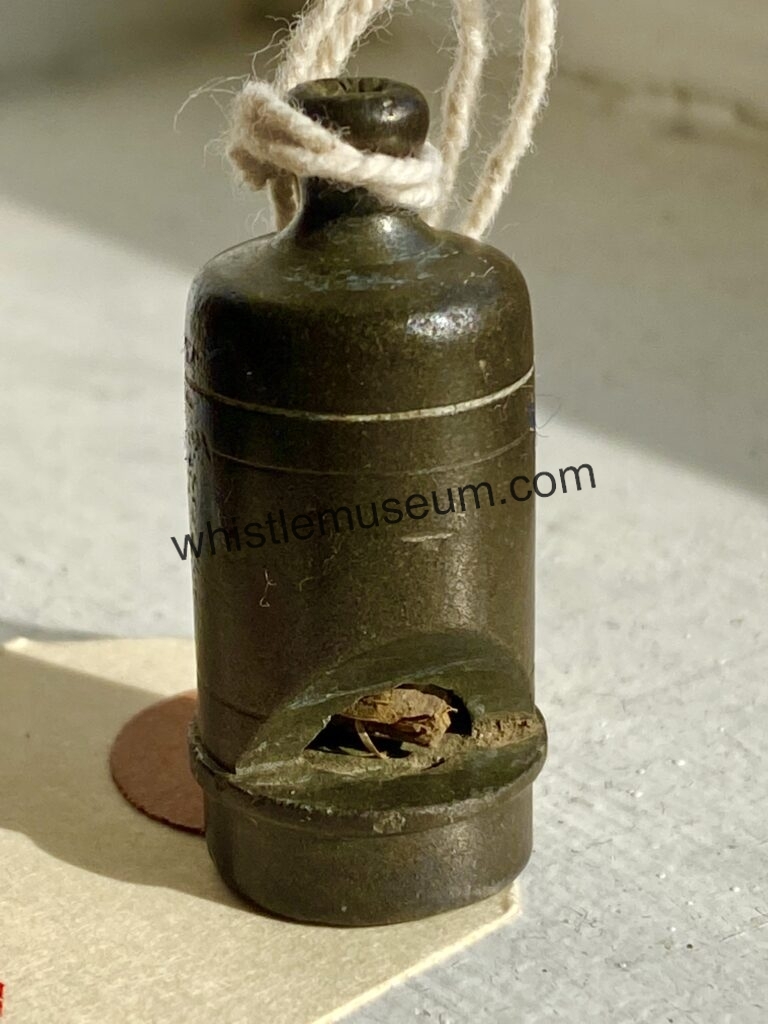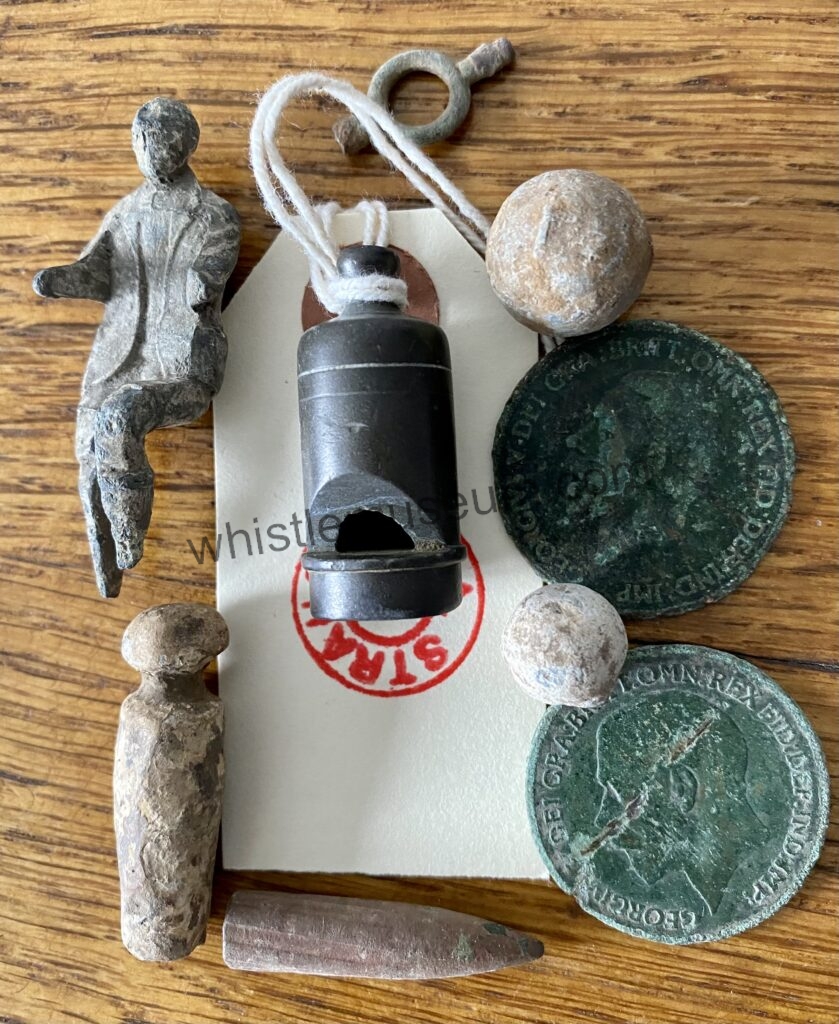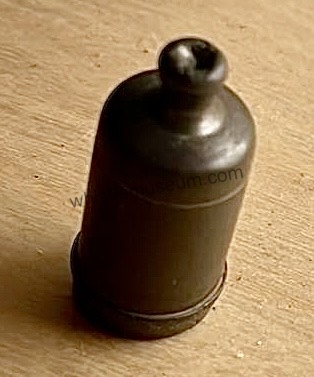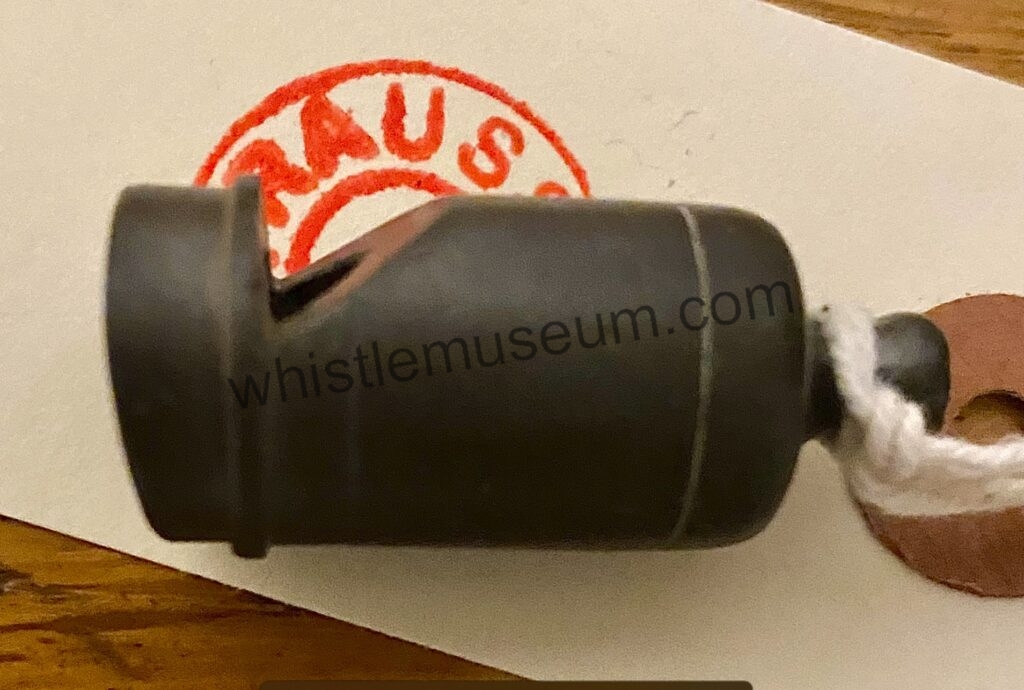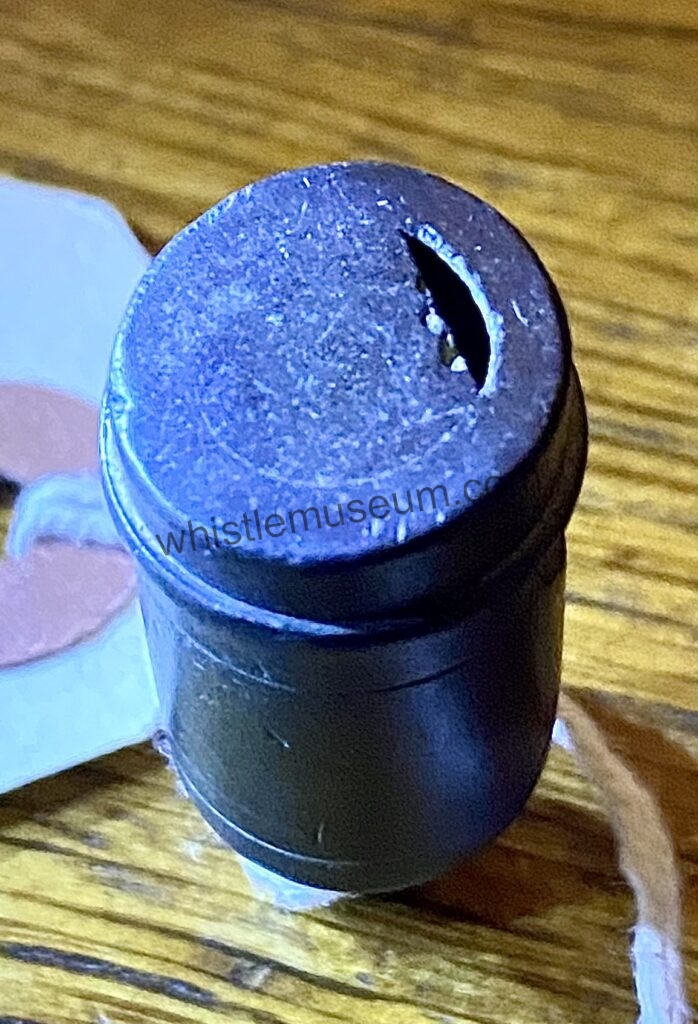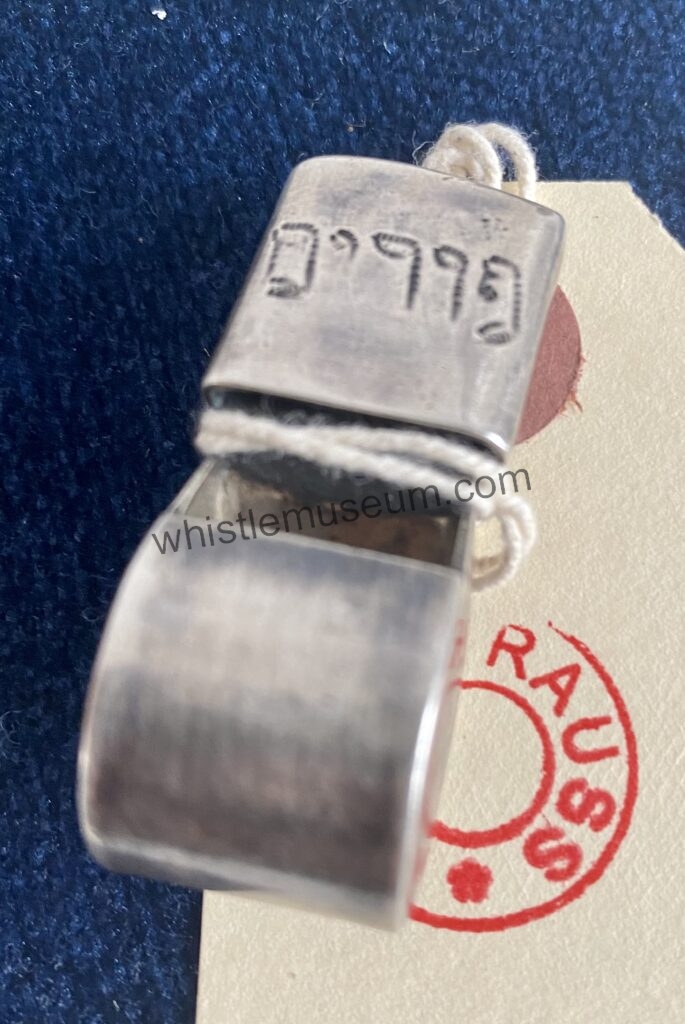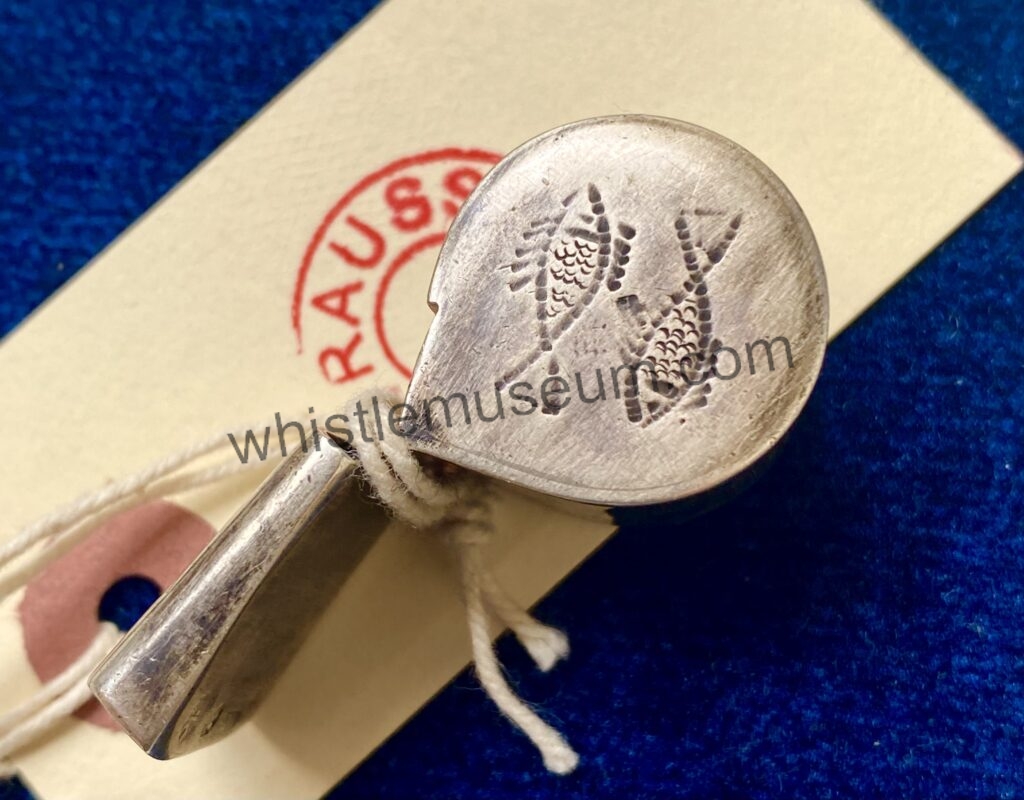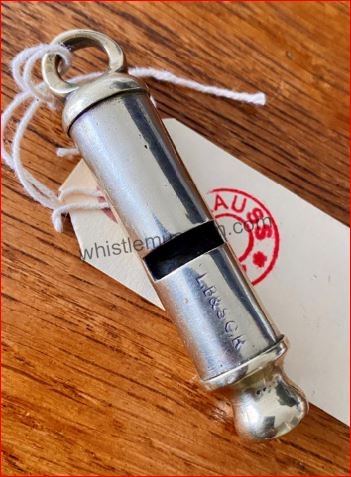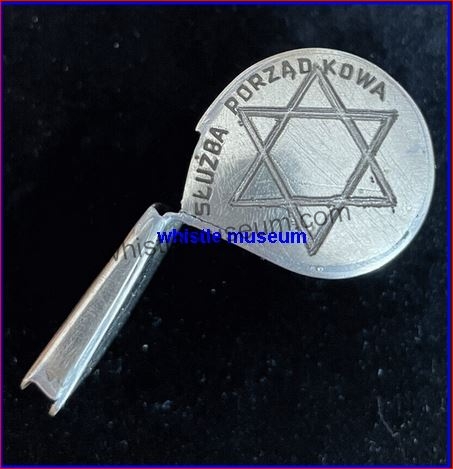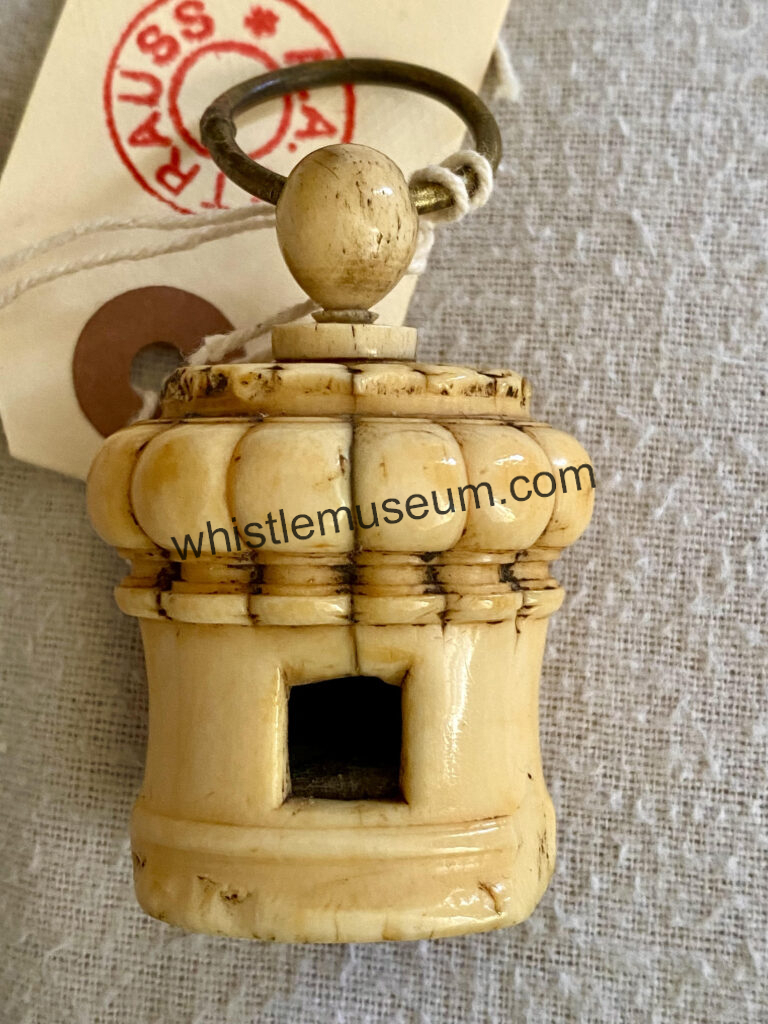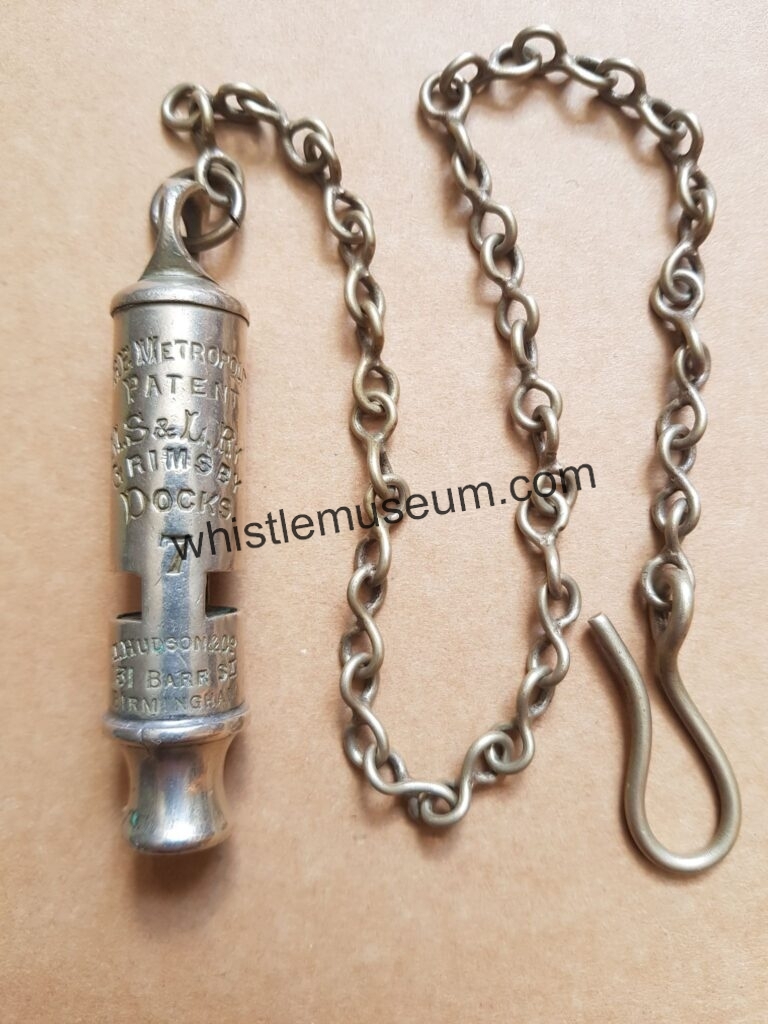J. Hudson & Co. Joseph Hudson Patent number 435 of 1885,

Photo of a Two Notes Tube Whistle – TNTW, Known to collectors as General service whistle, or Bobby whistle; Here taken apart for a clear view of the 5 various parts.
The Body, Mouthpiece and top loop ring, and the internal parts being the Partition,
and the stamped Diaphragm disc.
The patent was registered on January 13 of 1885, and designed somewhere in 1884
Patent Description:
Whistles, police and similar. The internal sheet-metal disc or diaphragm A crossing the barrel B is furnished with strengthening – fangs C which lie along the sides of the barrel, and is secured by soldering.
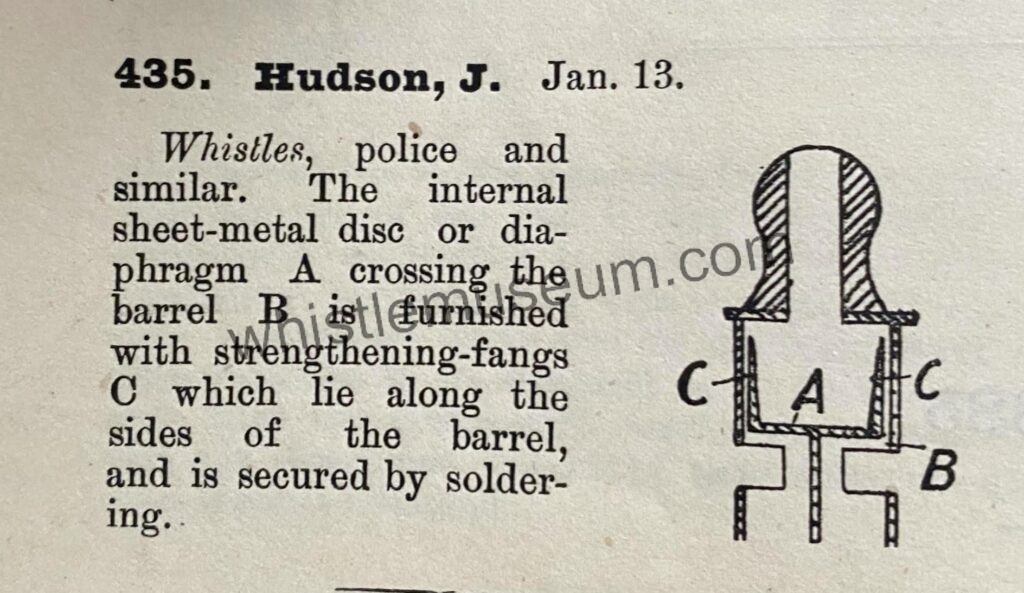
The patent for the diaphragm with the two tines-strengthening – fangs, came to solve the problem of weak diaphragm-disc in previous Hudson model (and other makers
as well which solved the problem in various ways), supplied to the Metropolitan Police in 1884, the previous diaphragm was loose and many came back to the factory to be fixed and refurbished, (whistle had to be taken apart in order to do so)
The Patent was valid for 14 years at that period, and the diaphragms using that patent were stamped, 1885 -1899, (Needs to be verified). *
The address stamp on this whistle 13 Barr Street Birmingham. is post 1894 -5 (Considered by many to be solely post 1888).
The whistle and drawing came from the great whistle scholar Martyn Gilchrist and he used it for the research of his book along with Simon Topmann:
Collecting Police Whistles and Similar Types. (1998) wow, that 25 years… The book was the ‘bible’ for Police whistle collectors for many years,
Chapter 8: Identifying Manufacturers & Dating Whistles Page 88 remains,
to this day, the best article available on whistle parts proving what a genius pioneering work was done by the writers.
The book and article are a must for whistle collectors, and those who wish to
know more about whistles of this type.
(Foot note)
*There is a lot more to write to discuss & learn, I will keep it short albeit it brings to mind many questions and some will remain unanswered since the further you dig the more the questions regarding the pre patent years, especially when one reads the great details on pages 6-12 in the book mentioned, regarding the “Metropolitan” police whistle, (Name registered as trademark in early 1884 ), showing it was on the 2nd of January that the order or of 7000 whistles was placed, more whistles supplied in April 1884 and numbering the whistles started July 1884.
P. S a suggestion when reading other posts here one should enlarge the screen for full view, then the side menu is not seen and and photos and texts are clearer.
Avner Strauss
